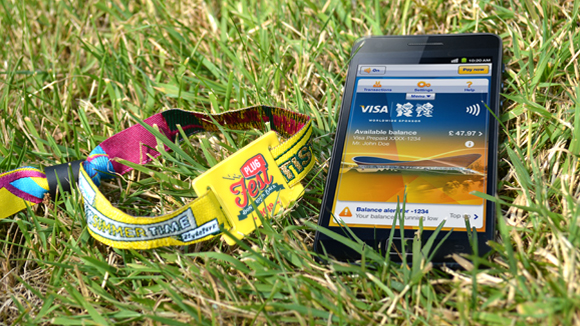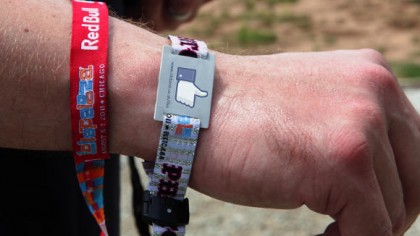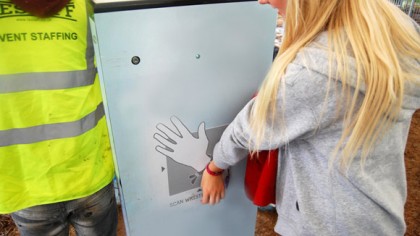RFID wristbands vs NFC apps: what's winning the contactless battle?
Why RFID wristbands are succeeding at music festivals

The future of live events is digital, and soon, your ticket, the way you pay for drinks and even your ability to share the experience on social networks, could all be done with a tap of the wrist.
Radio-frequency identification (RFID) wristbands are set to feature at many festivals and events this summer as an alternative to the NFC smartphone.
Most RFID wristbands contain short-range - typically 3-5cm - passive tags and don't require batteries, but instead, are powered when placed near or 'tapped' against an RFID reader.
- Opinion: NFC a killer app? No Flipping Chance
When detecting an RFID wristband, the reader 'agitates' a magnetic field created by a coiled antenna within the tag. The tag then uses this kinetic energy to 'power-up' and send data (held within the tags' memory), back to the reader.
The tags in RFID wristbands can either be personalised with someone's profile (e.g. data is held directly on the chip itself) or they can be used as an access 'key' to a secure database of personal data.
What else can RFID wristbands do?
ID&C is the UK company behind the wristbands at many major festivals including Isle of Wight. The company has also worked with brands such as Adidas.
More than 40 festivals around the world have used RFID wristband technology to offer fast-track entry, cashless payments and perhaps the most exciting bit - integration with social media.
Sign up to the TechRadar Pro newsletter to get all the top news, opinion, features and guidance your business needs to succeed!
Yes – after buying a ticket online, you'll have the option to link your RFID wristband to your Facebook or Twitter account, enabling you to post, Tweet, share and like all your favourite parts of the festival.

Footage from last year's Bonnaroo festival in Tennessee, show's how RFID wristbands helped generate 1.9 million Facebook likes.
In the UK, wristbands were used at some festivals last summer including the Isle of Wight, Wireless and Wakestock. An estimated 3.5 million festivalgoers around the word have now used them.
What about using NFC smartphones instead?
The problem with using NFC smartphones instead of wristbands is that not everyone has one. This alienates ticket-holders and brings contactless participation down from an achievable 100 per cent if you issue every attendee with an RFID wristband.
Then there's the fact phones run on batteries, and unlike RFID wristbands, will run out at some point during a multi-day festival. And, with limited (sometimes non-existent) ways to re-charge your phone in a field, your e-wallet, e-ticket and the ability to brag to your friends on Facebook, will vanish.
To say there's no place for NFC at festivals is wrong though. The Samsung Galaxy S4 for example, has been used as an RFID reading device and it's a perfect hand-held scanner for smaller events.

It's not just the practical issues mentioned above that affect festival-goers though, but the data integrity and security of any RFID system at a festival crumbles when the contactless device isn't locked to your wrist, synced to your profile and made non-transferable.
You might not see RFID wristbands at every festival this year, but with a reported three million Facebook likes and a billion cashless transactions already made with them, it won't be long until they're everywhere.